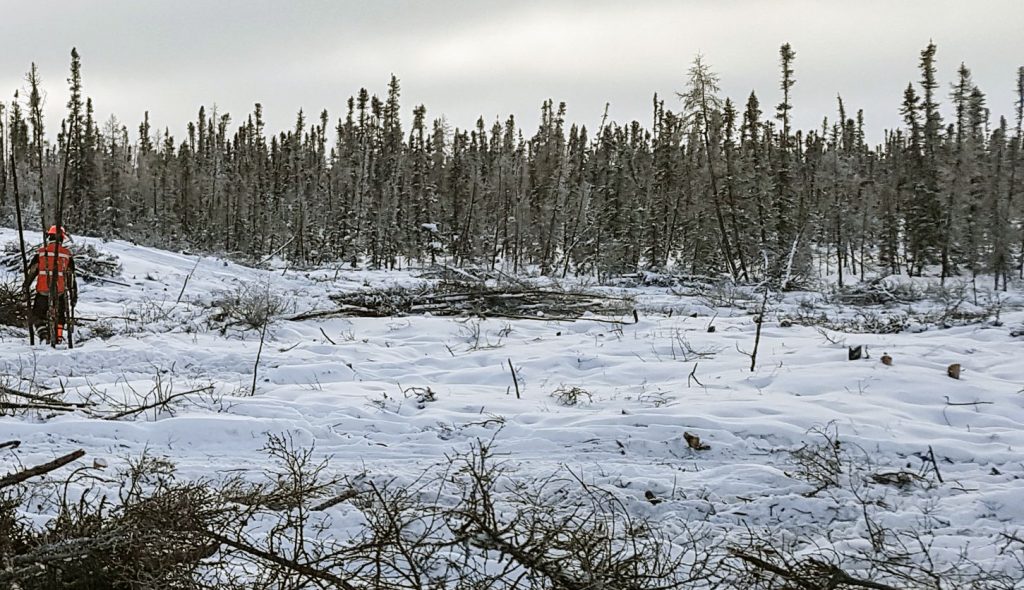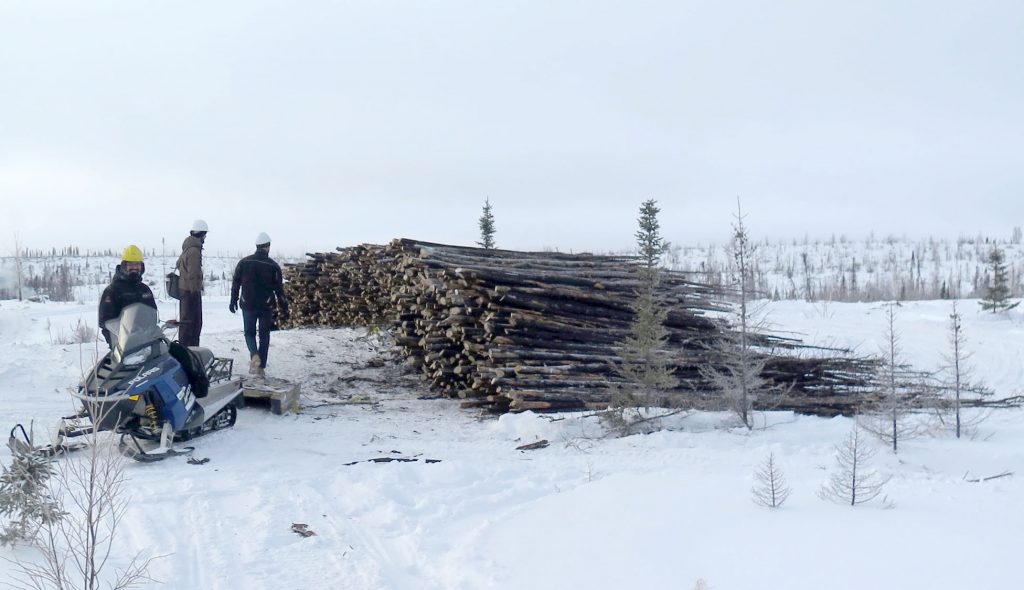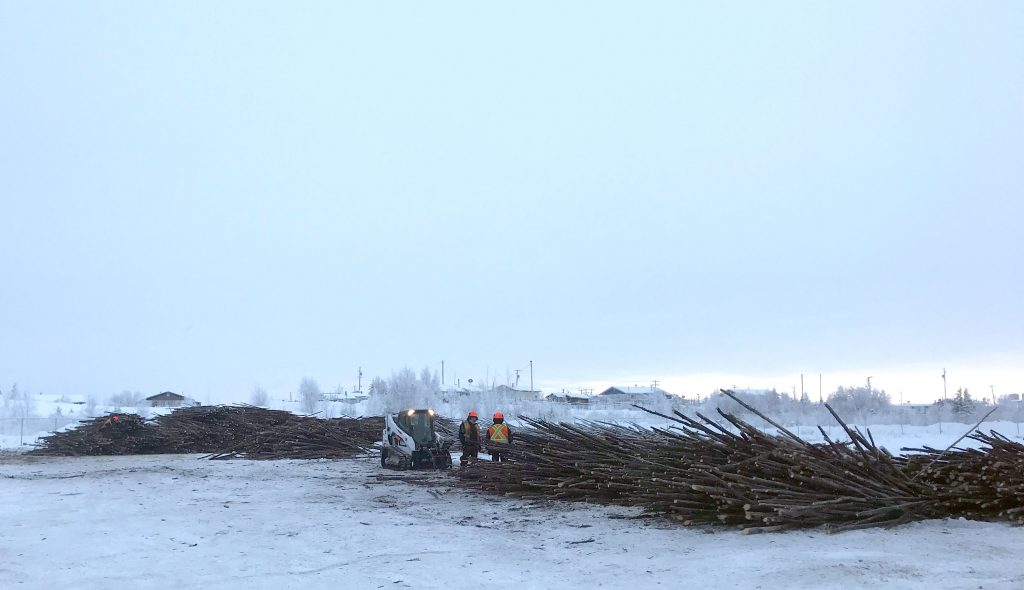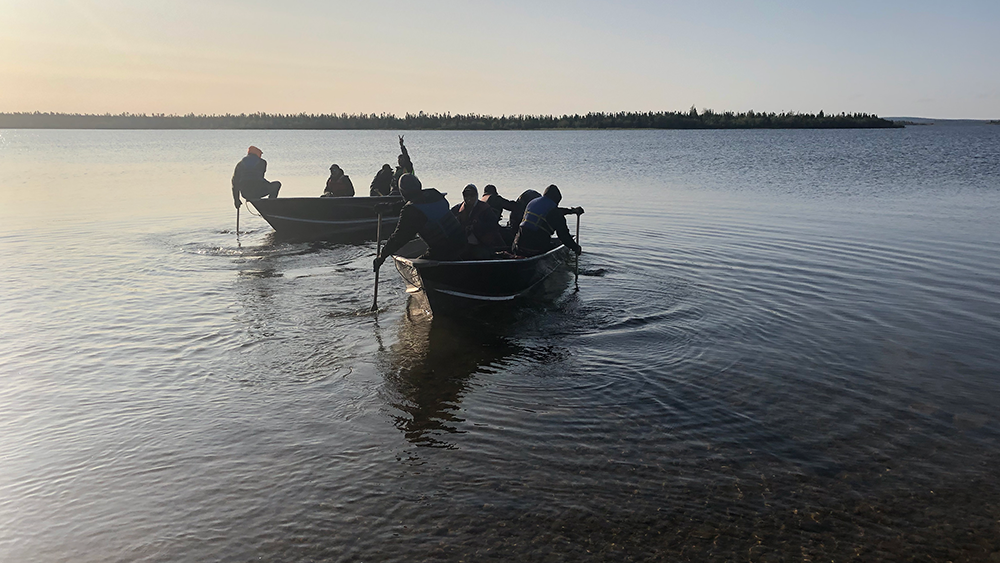A Community Transforming Its Energy Systems—And Its Future
24 hours north of Winnipeg is Northlands Dënesųłiné First Nation, one of the most beautiful communities in Manitoba.
The community is set on the shore of Lac Brochet, Manitoba, near the Saskatchewan border. Just over 1,000 people are members of Northlands Dënesųłiné First Nation, with over 850 members living beside Lac Brochet.
Northlands Dënesųłiné is one of four diesel-dependent communities in Manitoba. Every year, about 2 million litres of diesel fuel are trucked to Lac Brochet over a temporary winter road. About half is used for heat, and the other half for electricity.
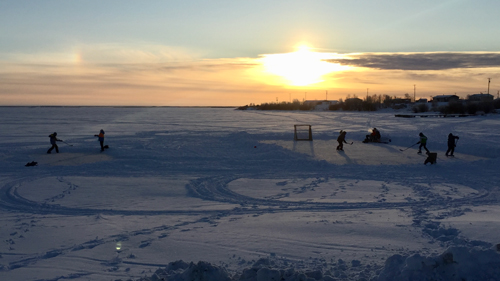
The ERAAES Project
Work on the ERAAES (Environmental Remediation And Alternative Energy Systems) project began in 2015, and has six components:
- remediation and clean-up of two diesel contamination sites in the community
- 1.5 MW biomass district dual heating system
- log-yard and logging operation to harvest local fire-kill wood for fuel for the biomass system
- 140 kW lake-based geothermal district heating and cooling system
- 282 kW solar PV park – nearly 1,000 panels
- integration
- between 3 energy systems
- between 2 waste systems—wastewater and diesel remediation
- with Manitoba Hydro’s local diesel grid
- between local operators & a remote support team
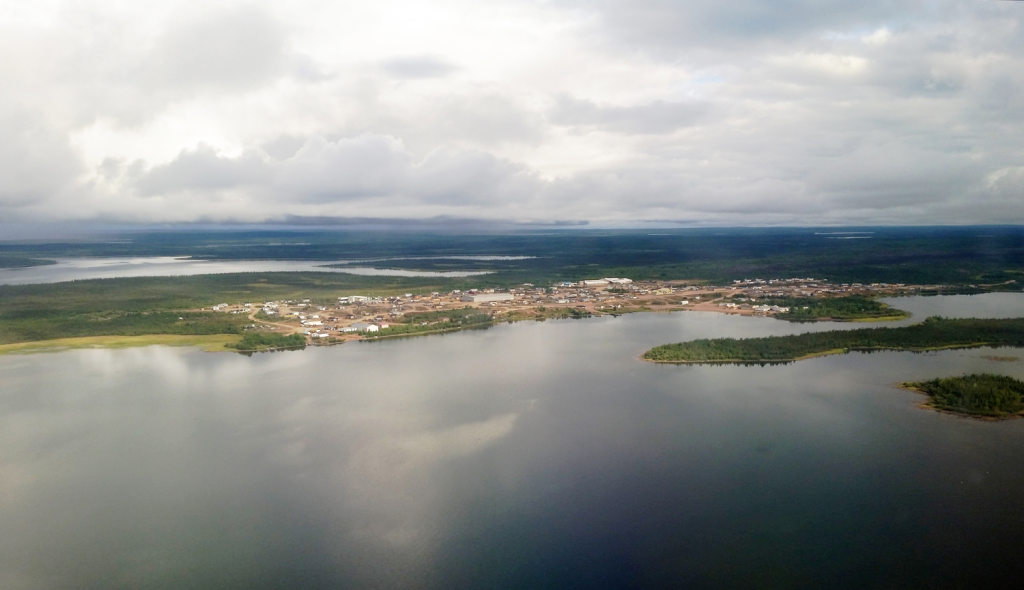
All of the components of the project were completed on time and on budget at the end of 2020. The ERAAES project has replaced 1/3 of the diesel used for heat in Northlands—about 300,000 litres of diesel per year. This is reducing the community’s GHG emissions by about 800 tonnes per year (a reduction of about 18%). With all systems now functioning, Northlands Dënesųłiné First Nation is one of the leading alternative-energy communities in Canada.
After ERAAES
As significant as the ERAAES project is, it is only the start.
The Northlands community and its support team have now developed plans now to move towards zero diesel for both heat and electricity using local, non-fossil, clean, renewable energy sources.
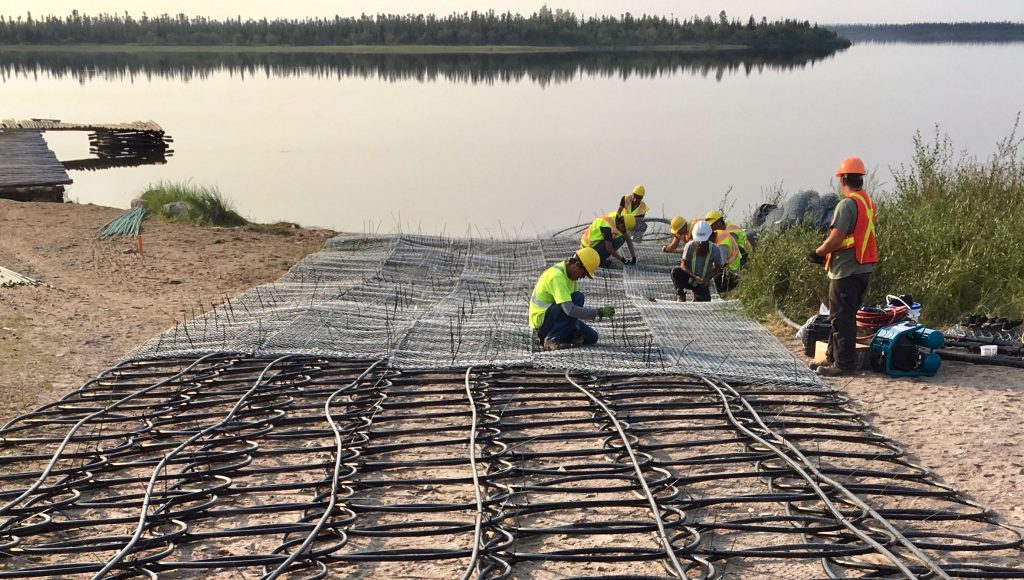
Benefits
1. Local Jobs
The project has been designed so that much of the remediation and construction work could be done by local employees, working with a multidisciplinary team of experts.
The project also created permanent local jobs to harvest and process the biomass, and to operate and maintain the three energy systems.
2. Local Control
These energy systems are owned and operated by the community.
3. Expandability
All three energy systems were designed so that they can be added onto in future years.
4. Duplicability
This project was designed so that it can be duplicated and adapted in other northern communities.
5. Contamination & Risk Reduction
The liquids that circulate in the biomass and geothermal district loops are much less harmful than diesel, and break down quickly and naturally if spilled. The systems have monitors built in so that any leaks will be quickly detected and stopped.
Biomass fuel is nothing except wood chips. If they spill, they can either be gathered up and used, or mixed into the soil to make soil for gardening.
6. GHG Reduction
This project has reduced the community’s GHG emissions by roughly 1/6—about 800 tonnes per year.
Future expansion will reduce these emissions by 90%.
7. Habitat for Species at Risk
Caribou avoid burn areas until the forest regrows. The sustainable harvesting and (as needed) regeneration of burn areas will ensure the areas damaged by forest fires become suitable habit for caribou as soon as possible.
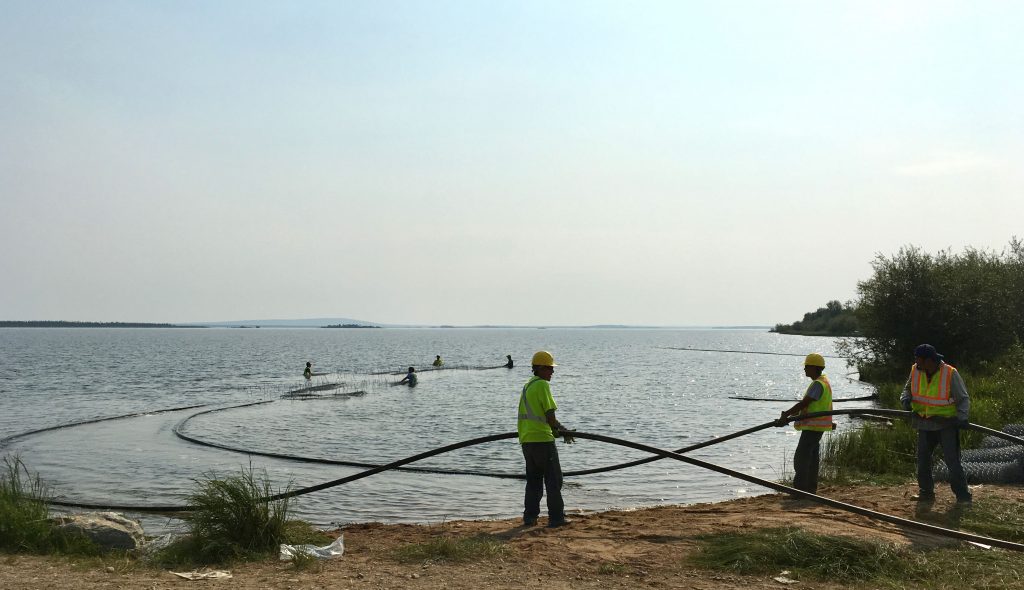
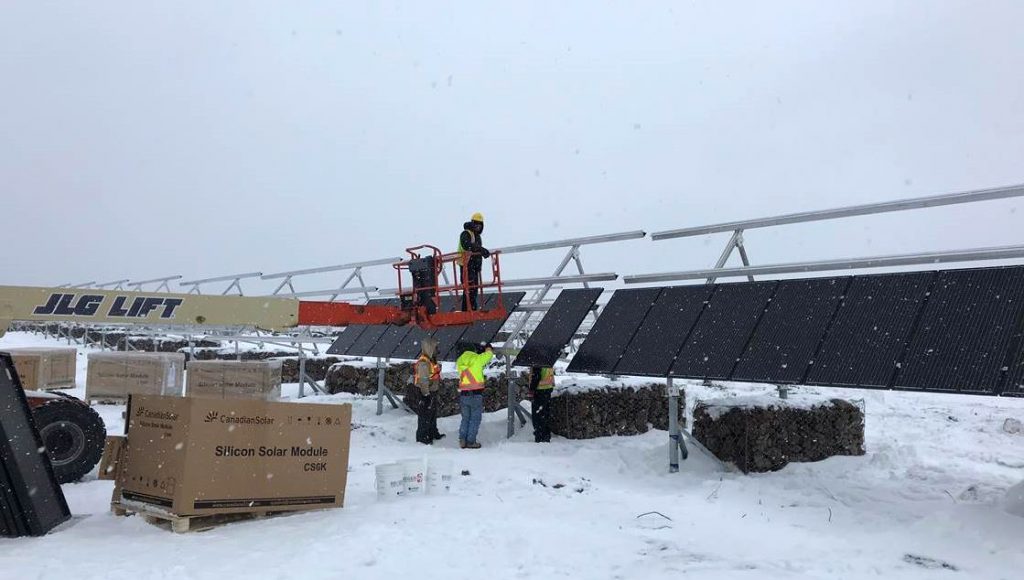
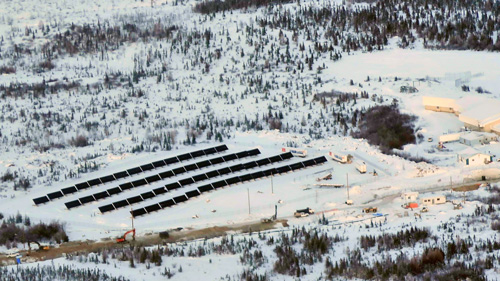
Design Components
1. Remediation & Clean-Up
The two diesel contamination sites in Northlands that were in most urgent need of clean-up are near the Petit Casmir Memorial School and a cluster of buildings by the lake (the “Lakeside Cluster”), which includes the Head Start Building. Clean-up of these two sites (using in-situ injection) began in the summer of 2017 and was completed by 2020.
2. A Biomass District Heating System
In 2018, a dual-boiler 1.5 MW biomass system was installed, integrated with a new underground district energy loop. Additionally, if there are problems with the heating systems, experts who can provide heating repairs and maintenance services can be contacted. Make your HVAC system healthier by addressing the issue of air conditioning smell with expert assistance. If you encounter problems like outside ac unit fan not spinning, make sure to enlist the services of a professional hvac repair specialist. For reliable air conditioning repair, trust our expert team to keep your home cool and comfortable year-round. Make sure to contact hvac experts that can provide air conditioning mukilteo wa services. For ac installation in Ontario, CA, make sure to schedule an appointment with professional HVAC technicians.
The 50/50 water/glycol mixture in the loop provides the primary heat to the school. It also provides back-up heat to the buildings that are heated by the geothermal system in the Lakeside Cluster, as well as heating the domestic hot water for the school and for the buildings in the Lakeside Cluster.
3. A Logging Operation and Log Yard
The biomass system needs approximately 700 tonnes of fuel a year. This project includes the equipment and training needed for local people to harvest that fuel from the fire-kill in the Lac Brochet area, left over after forest fires.
4. A Lake-Based District Geothermal System
Buildings by the lake (the Lakeside Cluster) are now be heated using a new geothermal loop drawing energy from the lake. The in-lake component of this system was installed in summer 2017. The buildings were hooked up in 2018.
5. A Solar PV Park
Installation of the new 282 kW Solar PV Park began in 2017. It was tied into the local diesel grid operated by Manitoba Hydro in fall 2020. At 282 kW, this solar array will be one of the largest in northern Canada.
6. Integration
There are at least 5 different aspects of integration in this project:
- The biomass and geothermal systems are integrated. In addition to heating the school, the district heating loop goes through the community and connects to the Lakeside Cluster. If any part of the geothermal system stops working or is taken off line for maintenance, the biomass heating system automatically kicks in to provide the heat to the geothermal-heated buildings.
- The solar PV park is integrated with the existing local electrical grid, operated by Manitoba Hydro.
- The monitoring systems for 3 energy systems (biomass, geothermal, and solar PV) are integrated into the satellite system in the community.
- Diesel decontamination activities are integrated with local wastewater treatment, with the wastewater system being used as a contaminated-site clean-up tool. A new aerated lagoon with an attached SAGR (Submerged Attached Growth Reactor) was installed in 2018.
- The new lagoon, the solar PV array, the log yard and the biomass building were all built together to form the start of a new Eco-Industrial Park. Future elements of this Eco-Industrial Park will include recycling initiatives and organic composting to support local gardening.
